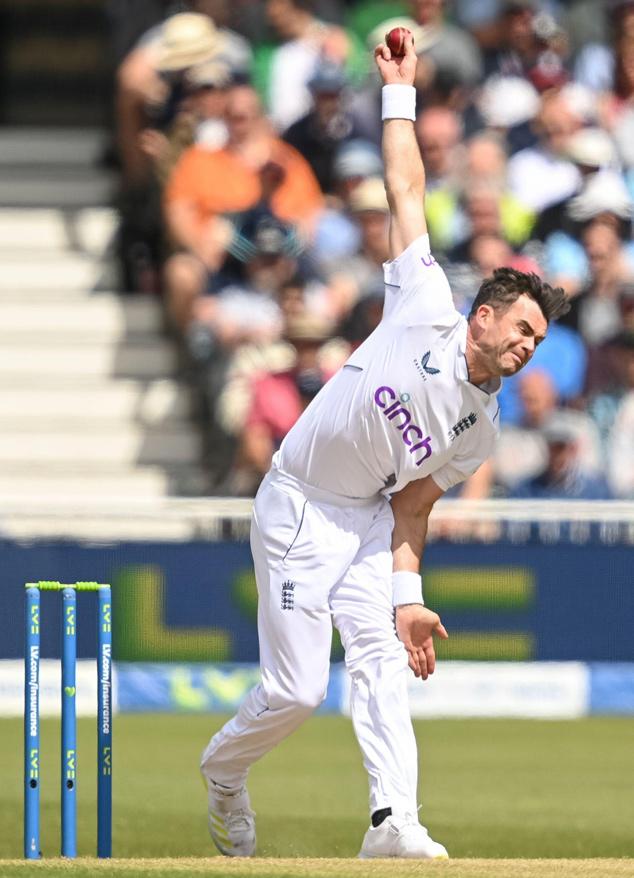
20 minute read
IN BAZ WE TRUST
INORMALLY TAKE A considered view on the result of the Ashes, primarily for the purpose of a punt on the outcome of the series, but not this summer. This summer I simply want England to win.
As a fan of the West Indies since birth, I have always been impartial enough when it came to assessing the relative merits of England and Australia and did so without sentiment. But this year there is something bigger at stake than making a few quid on the correct result.
Advertisement
A relentless monsoon of shortformat cricket continues to flood the international calendar, and as a die-hard fan of Test cricket I find it both frustrating and depressing that the most enthralling form of the game is being sidelined more and more each year. Perhaps it is inevitable that Test cricket will one day be consigned to history, but while Brendon McCullum is at the helm of this England team, there is still hope.
It may be a tough burden to bear, but the responsibility for a brighter future for the longest version of the great game seemingly rests on the shoulders of McCullum, Ben Stokes and their men as they prepare for the toughest challenge they have faced since the former New Zealand captain took charge of England in May 2022.
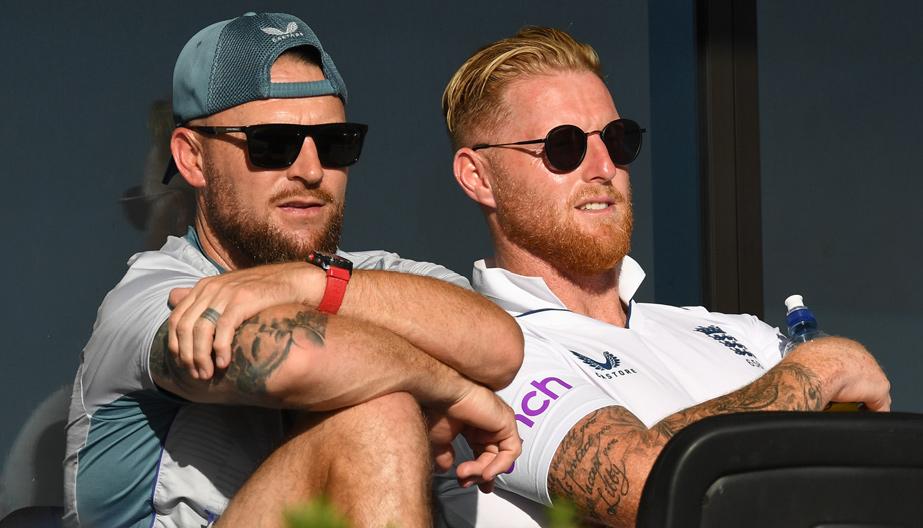
Since then England have played 16 Tests, home and away, winning 11, losing four, with the other match drawn, and have compiled that terrific record with a brand of cricket that has been unlike anything we have seen. It is worth remembering that prior to the start of the Baz and Ben bromance, England’s previous 17 Tests had yielded just one win.
‘Bazball’, as coined by Cricinfo’s Andrew Miller, has revitalised interest in Test cricket once again, with McCullum encouraging his players to ‘rediscover the joy of playing sport that they had when growing up’, and it appears that every player in the dressing room is fully invested in his philosophy.
Reading that last paragraph again, it is conceivable that I have copied and pasted the script of Ted Lasso, or perhaps from the cheesiest of cheesy Hollywood hero sports stories. Yet, the reality is McCullum’s England have repeatedly produced feats during the past year that have stunned the watching world and left us wanting more, all with a carefree abandon that is inspiring to watch.
In just his second match in charge, England faced his old team, New Zealand, at Lord’s, but Bazball gave Jonny Bairstow the freedom to bash 136 runs off 92 balls and chase down a last-day target of 299 in just 50 overs.
On the first day of the Rawalpindi Test against Pakistan, Zak Crawley, Ben Duckett, Ollie
Pope and Harry Brook smashed a scarcely believable 506 for 4 in 75 overs. Against India at Edgbaston, England watched Rishabh Pant cart their bowling for 146 runs in 111 balls and conceded a 132-run first-innings lead, but produced a blistering chase of 378 in 76 overs to win against all the odds. Well, that was the old definition of against the odds, because this team have changed how those odds are now calculated.
The list of incredible feats McCullum’s men have produced have made it crystal clear that anyone playing a Test match for England now walks on to the field of play believing they can win any match from any position, no matter how desperate or unlikely it may seem. And pivotal to their success is that they take on those challenges without fear of failure.
The congruence of McCullum’s approach is that it appears to be deep within his DNA and one that he has cultivated his entire life. One of his rugby coaches at college, Darryl Paterson, told The Guardian’s Ali Martin: “He had incredible selfbelief. He would take risks. Some days they came off, some days they didn’t, but that was fine.”
Fast forward to the spring of 2022 and these were the observations of England’s strategic adviser, Sir Andrew Strauss, after
McCullum’s interview for the role as coach of the Test team: “He’s got such clarity of thought and approach. He used to run down the wicket to the fastest bowlers; he always took the positive option. He wasn’t afraid of failing; he isn’t scared of making mistakes.”
Ahead of the series against Pakistan late last year, McCullum told the assembled media: “We’ll certainly be pushing for results, it’s our obligation to ensure that people walk away entertained. If we get outplayed, that’s OK.”
AND THE MAN WHO scored New Zealand’s only triple hundred in Test cricket is acutely aware of the importance of his and England’s role in rescuing the longest version of the game from obscurity. “Test cricket is on a downward trend but Test cricket is my real love. If anyone is able to reinvigorate Test cricket and make it popular again, then it’s England. If you can be at the forefront of that by playing an attractive brand of cricket with a smile on your face and try to entertain, then Test cricket has a chance.” Even as a proud West Indian supporter, hearing those words from McCullum and observing what England have done this past year, I can honestly say I haven’t felt more inspired by a cricketer since Brian Charles Lara pulled Chris Lewis to the boundary to break Sir Garfield Sobers’ Test record in 1994.
Approaching any Ashes series, there is always a great deal of speculation about the composition of the teams ahead of the summer, but it appears more of a concern for Australian supporters than it is for England’s. It doesn’t seem to matter who plays for England. Yes, there are niggles bothering 40-year-old Jimmy Anderson – plus ça change. Ollie Robinson has also been an injury worry and there have been rumblings of discontent about the returning Bairstow replacing Ben Foakes behind the stumps. To counter those issues, fast bowler
overstated – but as the Ashes begin, Rishi Persad is determined to try…
Fixture Dates
1st Test Edgbaston
Fri 16 – Tue 20 June
2nd Test Lord’s
Wed 28 June – Sun 2 July
3rd Test Headingley
Thu 6 – Mon 10 July
4th Test Old Trafford
Wed 19 – Sun 23 July
5th Test The Oval
Thu 27 – Mon 31 July
Mark Wood is available again and Worcestershire’s Josh Tongue has been added to the mix.
The Aussies have injury worries of their own. One of their premier fast bowlers, Josh Hazlewood, has been plagued by a side strain for the past few years and the same niggle brought a premature end to his 2023 IPL stint.

No one underestimates how good the best players in this Australian side are. Captain Pat Cummins is a terrific leader and bowler; Steve Smith is still in the argument for the best batsman in the world; and there are one or two young stars such as allrounder Cameron Green to enjoy. But the support cast for those Baggy Green stars possesses no fear factor.
David Warner has scored just one century in his last 32 Test innings, while his opening partner Usman Khawaja has a Test average under 20 in England. And if Hazlewood does succumb to injury, there are no back-up pace bowlers that English batsmen need to worry about.
Above all else, I think England will win the Ashes because Australia cannot play like England. No other team can play like England, because no other team is lucky enough to have Brendon McCullum in charge.
Maybe I have gone over the top in my appreciation for what McCullum has done for England and for Test cricket. But he has dragged the game I love back from the brink with a refreshing simplicity of style that I would have yearned to replicate if I still played cricket today. I hope youngsters the world over will watch this Ashes series and be inspired to play cricket the way this England Test team plays, and it secures the future of the sport’s version that is most under threat.
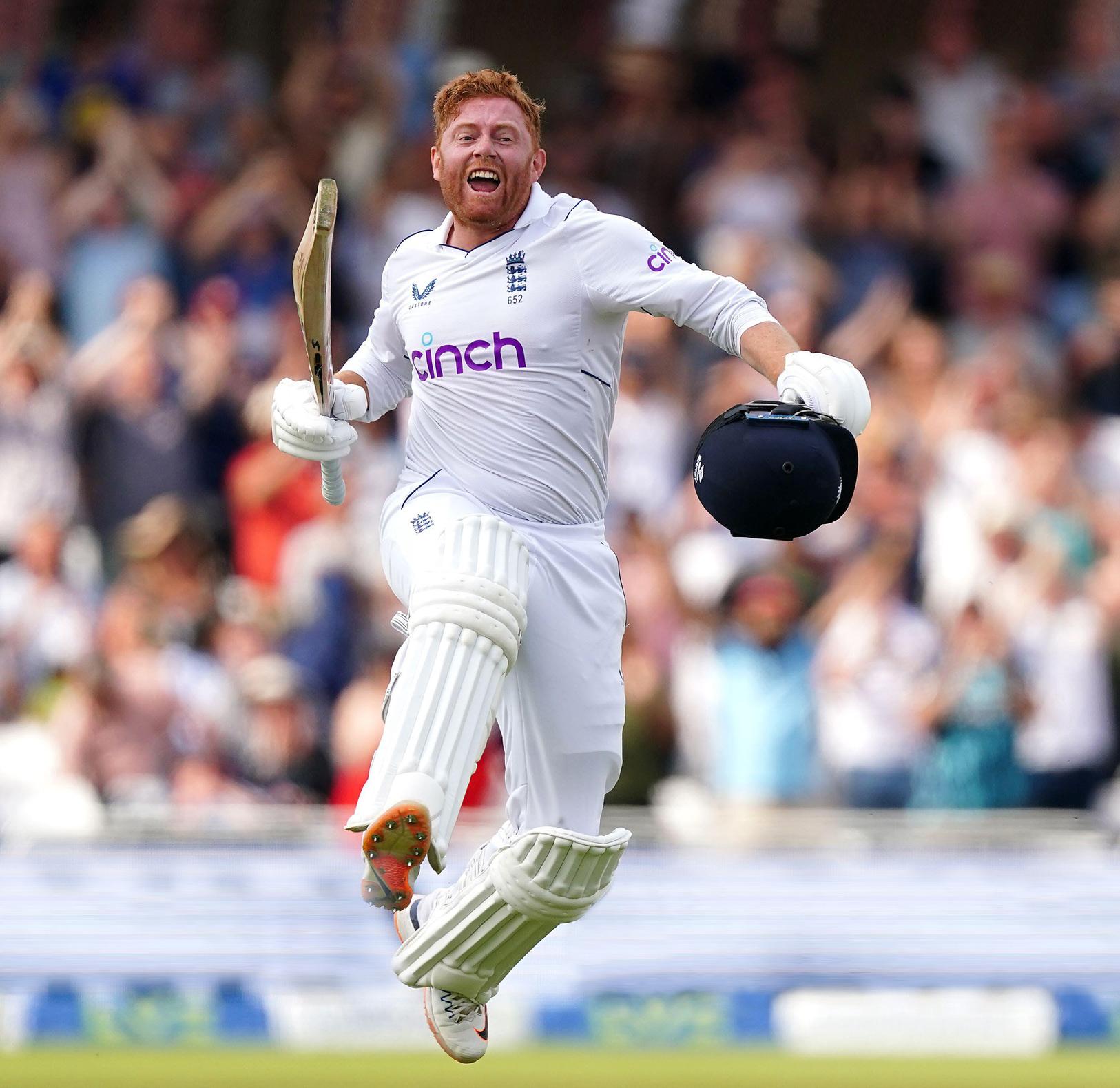
And if all the virtues of McCullum, Stokes, Bazball and England’s Test team do not get you cheering for them, then remember that McCullum is also a huge horse racing fan. On England’s tour of New Zealand last winter, McCullum cancelled a scheduled practice match to take the team to watch his horse, Defibrillate, run and win the Group 1 Zabeel Classic at Pukekohe racecourse. The geegees and cricket. How can you not cheer for him?
So yes, I want England to win the Ashes, but most importantly I want Bazball to win and Test cricket to thrive. I believe in Brendon McCullum. n
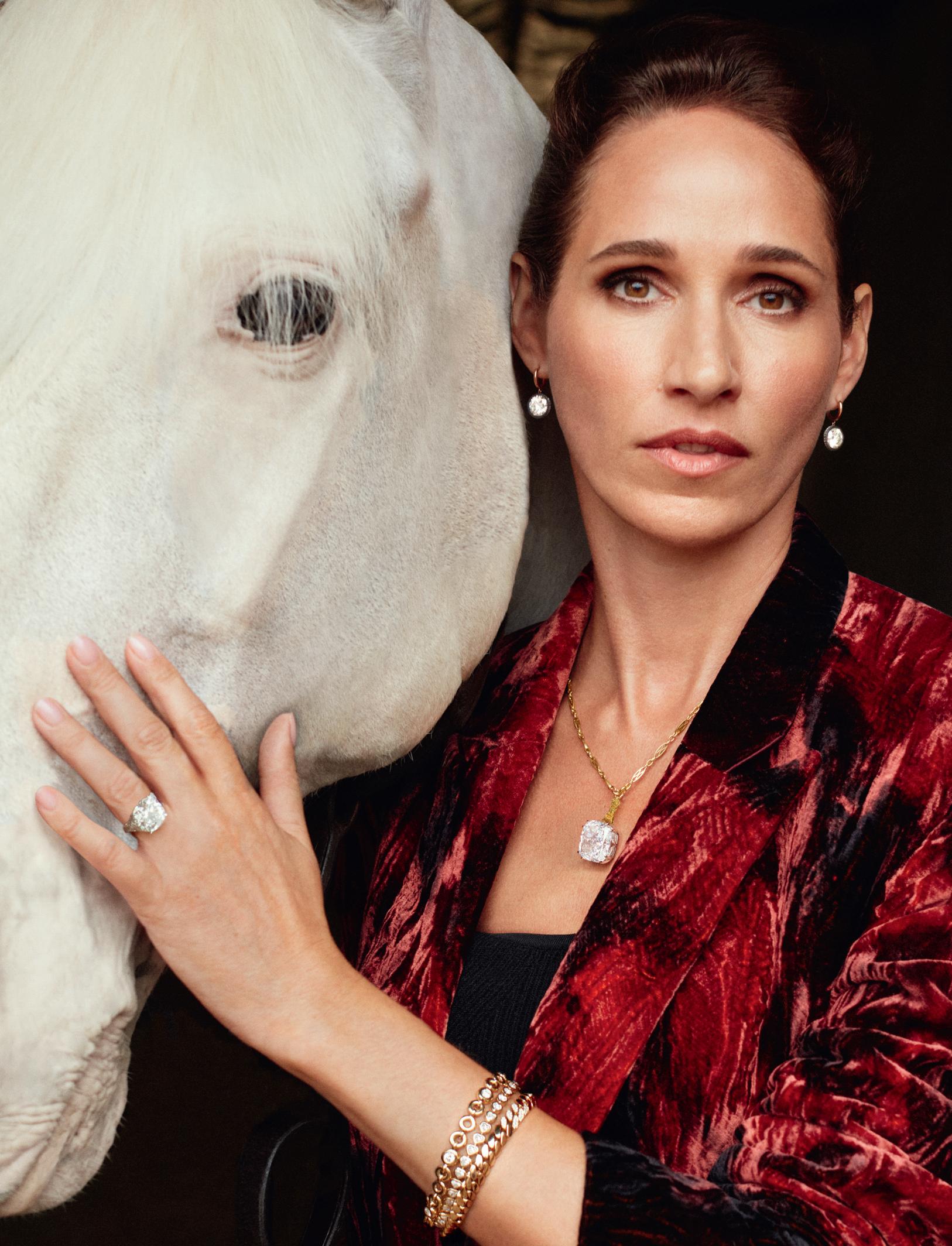
NATURE’S RARE JEWELS
IT ’ S MAY 2016 AT ST JAKOB PARK in Basel.
The final whistle of the Europa League final is moments away. Not only have Jürgen Klopp’s Liverpool been outplayed by Unai Emery’s Sevilla, a side bursting with energy and power, but the travelling Kop have been comprehensively out-sung by their Spanish counterparts.
It is Liverpool’s first European final since Athens in 2007 and the stadium is a sea of red scarves and banners, but for one corner. As the drizzle falls, that corner is the only part of the ground you hear. Chants of Sevilla, Sevilla, Sevilla echo off the tight terraces tumbling down on to the pitch.
Spain’s oldest club – their identity writ large in the lyrics of their anthem – offer constant reminders of who they are, why they are here and what they have come for.
“Y Sevilla, Sevilla, Sevilla, aquí estamos contigo, Sevilla, compartiendo la gloria en tu escudo, orgullo del fútbol de nuestra ciudad…”
These words reveal ‘El Himno’ to be no ordinary football song, but a proclamation of identity, unconditional love and pride.
“[A]qui estamos contigo Sevilla” (We stand with you Sevilla), “compartiendo la gloria en tu escudo” (sharing the glory) and “orgullo” (pride) of “nuestra ciudad” (our city).
The essence of an anthem is a tie that binds those off the pitch with those on it.
The Sevilla fans belting this out on a rainy night in Basel weren’t simply revelling in a third Europa League title in a row, they were heralding a city, a team, and a collective identity; a glorious sense of belonging.
Some teams have them, some wish they had them. What sets apart the anthem from the football song? And what is the difference between an anthem and a battle cry?
Tragedy
First things first: an anthem cannot only be about winning. Take for example Hala Madrid. Sung loud and proud on the terraces of the Santiago Bernabéu, it encapsulates everything that the collective football public dislike about Los Blancos.
“Hala Madrid y nada mas”. The message is unequivocal. Supporting Real is about nothing more than Real and nothing more than winning. This brings me to my first principle. An anthem must be in some way self-deprecating. It has to acknowledge the peculiar vulnerability of unconditional support. Any other relationship that causes the extent of suffering that supporting a football team brings would be labelled abusive. But, like the twisted masochists we are, we keep crawling back, hoping to be treated better while fearing the worst.
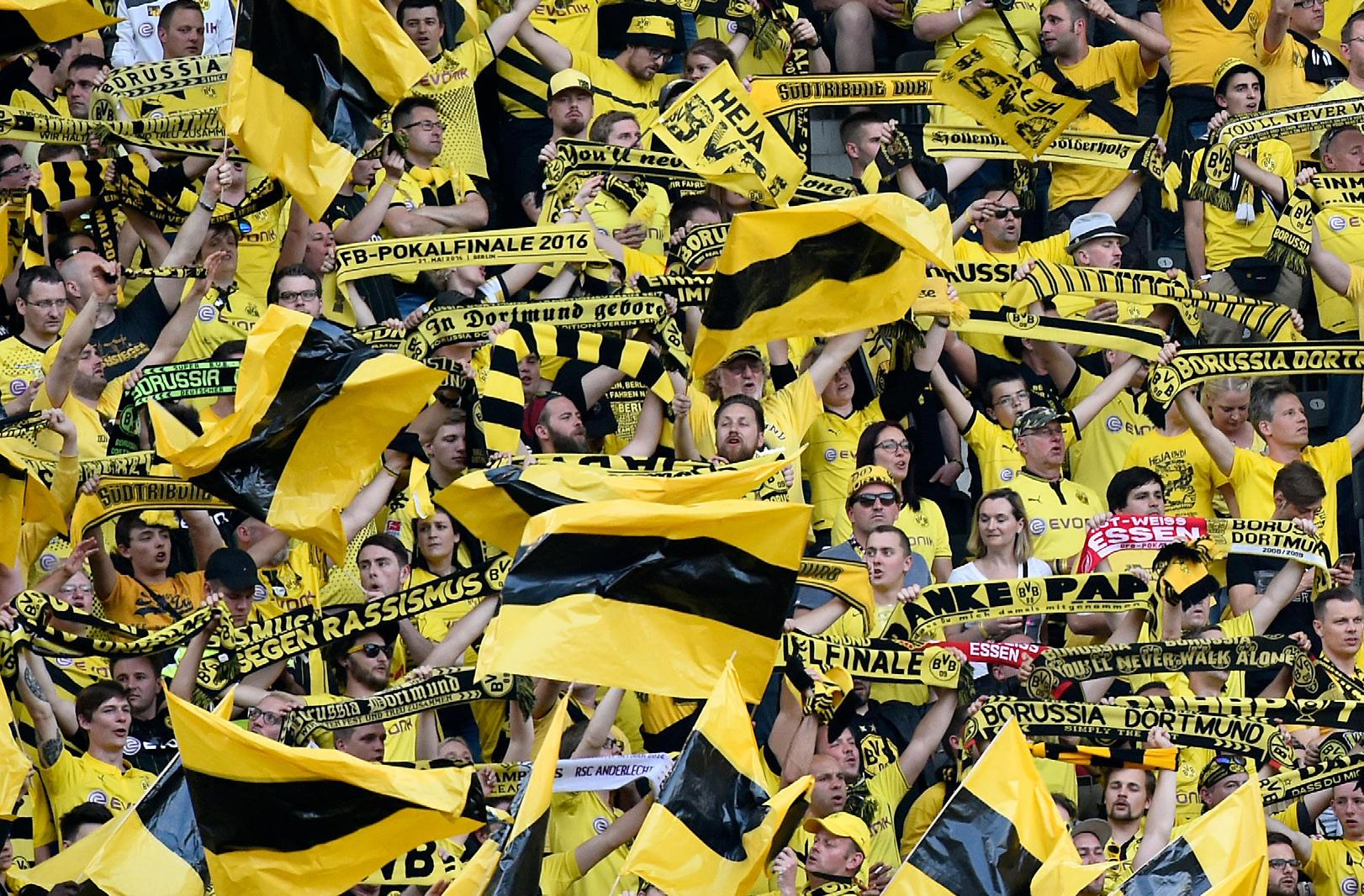
Hibernian’s tearjerking Sunshine on Leith illustrates this with an opening verse of: “My heart was broken (repeated), sorrow, sorrow, sorrow, sorrow.”
The song exists on two levels. It was adopted as the Hibs anthem during the “Hands off Hibs” campaign in the Nineties as Wallace Mercer, owner of fierce rivals Hearts at the time, sought to take over the club. The Proclaimers took part in a rally at Edinburgh’s Usher Hall, and one of their songs that gained particular traction among those gathered in green that day was Sunshine on Leith. It became inextricably woven into the collective efforts to defeat Mercer. David vs Goliath: a battle that Hibs fans ultimately won.
The song confronts inevitable heartbreak, both at the possibility of losing their team and of losing the match, yet the Hibs fans will continue to pour through the turnstiles of Easter Road and support. What message does that send to the players? Regardless of the result, come wind, rain, or shine, we will be with you.
An anthem can’t just be about winning, it must acknowledge failure; a good anthem is not without an air of tragedy.
Identity
Another key facet in the emotional DNA of the anthem is identity. It must communicate a sense of place, both literally and figuratively for players and fans.
In June last year, as Wales beat Ukraine 1-0 courtesy of Gareth Bale, the Red Wall rapturously saluted its heroes. They had climbed the mountain and qualified for their first World Cup in 64 years. Moments later, fans and players joined in a rendition of Yma O Hyd
Written by Welsh language folksinger Dafydd Iwan, the lyrics are a journey through Welsh myth and legend stretching back to the epoch of Roman usurperturned-Welsh-dreamer Magnus Maximus. With a tangible sense of place established, Iwan’s genius becomes apparent. After all that history, despite the bloodshed and toil, “yma o hyd”: we are still here. The message: we are present and alive, and what a journey it has been.
It is an intoxicating combination of elements. Indeed, it was precisely this heady mix of identity and suffering that propelled Wales all the way to Qatar, where they promptly exited in the group stages managing just a single goal, despite the indomitable efforts of Michael Sheen.
But perhaps their shortcomings in Qatar are telling. Pure emotion, Yma O Hyd, is not enough to sustain a World Cup campaign. However, the fact that Wales even made it there, a country with a population totalling 3.1 million, speaks to the anthem’s inspirational power.
History
Since Arsenal moved to the Emirates Stadium from Highbury in 2006, they have been searching for an anthem to consecrate their new home. The first one they tried –Elvis Presley’s The Wonder of You – was trotted out to a reception of general apathy. But why did it fail? “I guess I’ll never know the reason why/ You love me as you do/ That’s the wonder/ The wonder of you…”
The Top Ten
1. YOU’LL NEVER WALK ALONE
Spine-tingling – hard to pick an all-time version. Try 2019 after that Champions League semi-final victory over Barcelona.
2. SUNSHINE ON LEITH
Heart-breaking and stirring in equal measure. Scour YouTube for their postScottish Cup-winning effort in 2016.
3. HIMNO DEL CENTENARIO
Resonant and uplifting. Watch the Ramón Sánchez Pizjuán come to life with a vibrant rendition before Sevilla played Real last season.
4. I’M FOREVER BLOWING BUBBLES
It’s not easy being a West Ham fan, is it? This song aptly sums up the brilliant futility of supporting the Irons…
5. ON THE BALL, CITY
The oldest football song in circulation, harking back to the dim and distant 1800s. Wonderfully retro, yet relevant. See a 2019 version from Carrow Road before the ‘Old Farm’ derby.
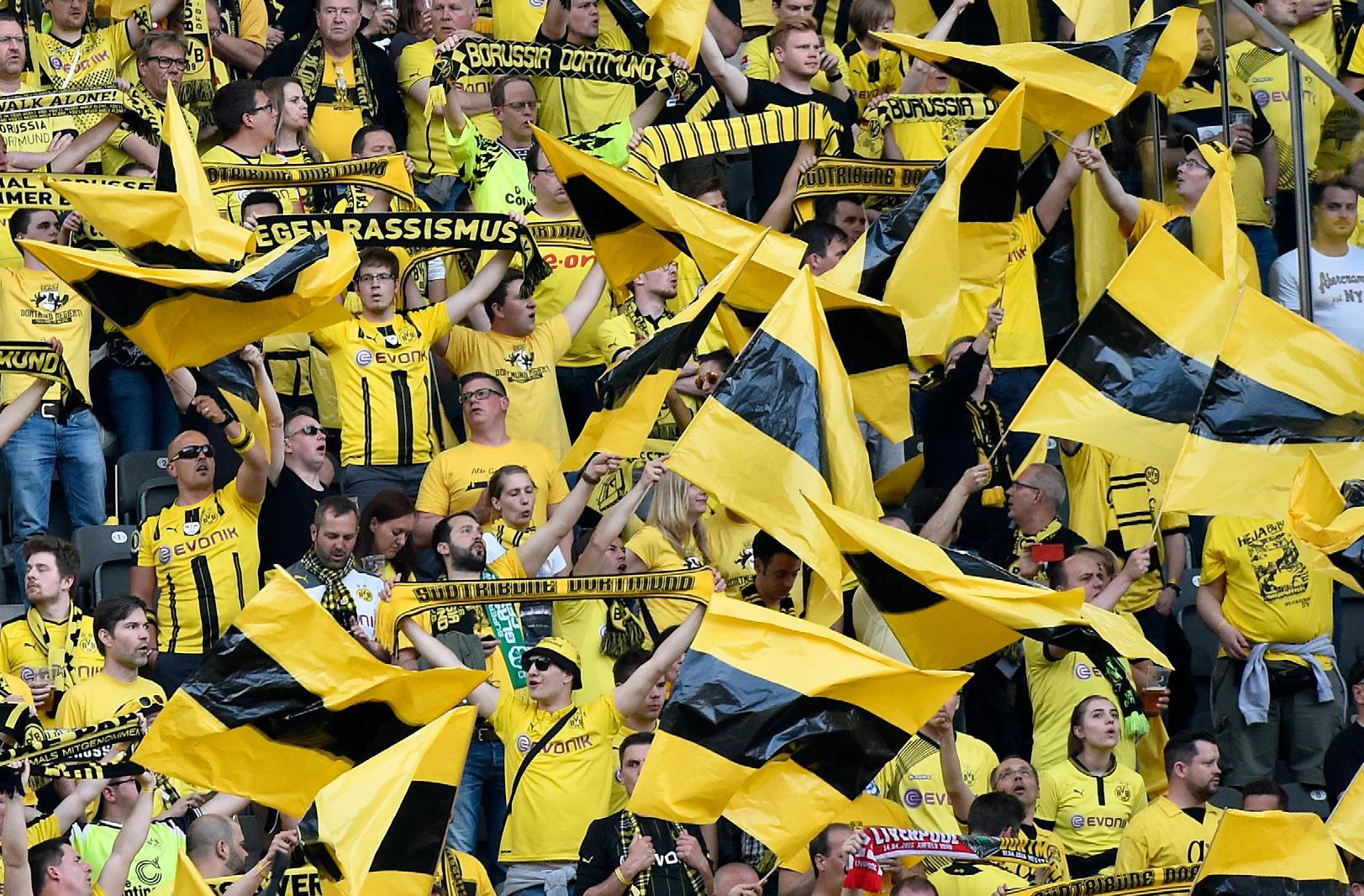
On paper, these lyrics would appear to hit all the right marks. The ludicrous irrationality of placing your emotional wellbeing in the hands of 11 strangers. But it felt empty. Ripped from the bosom of Highbury with its magical marble halls, the Gunners desperately needed something that could speak to their history and make the Emirates feel like home. But The Wonder of You lacked authenticity. 50,000 North Londoners had little connection to Elvis or his words. If anything, despite Highbury lying just under half a mile from the Emirates, it only made the Arsenal fans feel further from home.
Now they are trialling something new. In early 2022, singer-songwriter Louis Dunford released the first song from his second EP, The Angel: North London Forever It is a plangent and nostalgic ode to the borough and its history, the verses taking the listener through the streets of Highbury: “North London forever/ Whatever the weather these streets are our own/ And my heart will leave you never/ My blood will forever run through the stone.”
And it has worked. After years of acrimony and bitter infighting, the Arsenal fanbase is finally united. Dunford has delivered history to the Emirates, bringing together the fans and the team. Crucially, he has done so by locating his lyrics squarely within the identity of North London.
Beauty
It’s the Champions League final in 2019. Spurs face Liverpool at the Wanda Metropolitano in Madrid. Old foes José Mourinho and Arsène Wenger are sitting side by side in the studio as pundits for Be-IN Sports. There is the usual pre-match chatter, until suddenly a quiet gathers in the room.
Mourinho gestures for silence as the red and white scarves are hoisted and the Liverpool fans begin their rendition of You’ll Never Walk Alone. He comments: “This is more beautiful than we can say.”
Wenger adds “That’s unique.” Two men, who throughout their coaching days were the bitterest of rivals and who spent most of their careers trying to beat Liverpool, are united in admiration. And that is the art of the anthem. To stop you in your tracks and honour the wider context of football as a simulacrum for what it means to belong. n
6. THE FIELDS OF ATHENRY
What a song. In Euro 2012, with their team trailing and certain to be heading out of the tournament, the Irish fans responded with a rousing refrain of this epically tragic anthem.
7. YMA O HYD
A defiant anthem packed with historical resonance. Watch the Wales players join the Red Wall in an electric rendition last summer after World Cup qualification.
8. CANT DEL BARÇA
Set to a military rhythm, this is an invigorating reflection of the Blaugrana. Penned in Catalan, it has a powerful sense of purpose and place.
9. HIMNO DE BOCA
Boca Juniors fans are widely thought of as some of the world’s most passionate supporters. La Bombonera is an electrifying old ground whose foundations literally shake when Boca score.
10. HYMNS AND ARIAS
In the words of the great Tom Jones, “singing in South Wales is part of life”. This is a South Wales anthem to inspire the mighty Swansea City. Ar Hyd y Nos: all through the night.
Strength and conditioning coach Matt Little has worked with Sir Andy Murray through thrilling highs and painful lows. Henry Beesley asks him how a sporting legend is built – and then rebuilt
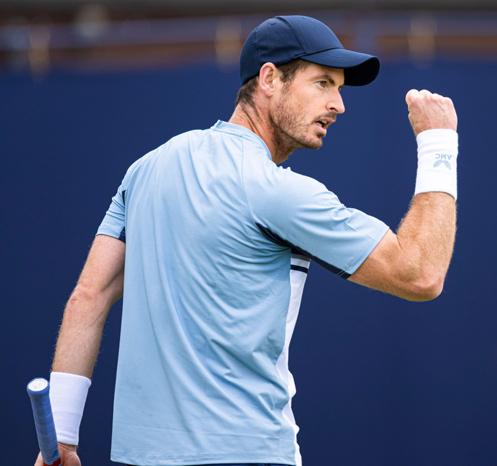
He’s famously been a ‘questioner’ of things over the years. He’s so analytical, drilling into every subject to the nth degree. If I give him a session, he’ll always want to know why: “Why today?” “How does it link to my tennis training at this moment?” “What’s the data behind it?” These are questions that other players don’t ask in as much detail.
What does a typical training day look like?
What are the differences between the main tour and during off season?
There’s a much greater emphasis on the physical side during the off-season. That’s where we get chances to make great strides from a physical standpoint. In peak season, you’re forever balancing the energy levels of competing and the amount of training required to keep the body going.
In terms of preparation to play, we take longer than ever these days. It can be anywhere up to two hours, including a physical warm-up, time with the physio etc.
searching moments in Miami, where he was just trying so hard to rehab. He was hitting with players and they were almost consoling him after practice sets, and that was really crushing to see. We were all working so hard to get him ready but it was just so clearly not going to work. That period was incredibly low.
In practice, you could see he was just so far off the pace. I remember in Australia in 2019, he hit with Rafa [Nadal] and Andy won’t even know this, but I went away on my own and was just in tears in a corridor in Melbourne Park. As someone who cares about Andy, not just as a tennis player but as a person, it was heart-breaking to have seen him be as great as he had been and then as a shadow of himself, through no fault of his own.
Do you think reaching world number one ultimately had a negative impact on Andy from an injury standpoint?
Take us back to the very beginning. How long have you been working with Andy, and how did it come about?
We’ve been working together for around 15 years now. We met when I was involved with his brother [Jamie], when he won the mixed doubles at Wimbledon with Jelena Jankovic. I built a rapport and a friendship with Andy during that time, and then, after he finished working with Brad Gilbert later that year, he decided to put a team in place around him. From there we formed the very first ‘ Team Murray’ way back in December 2007 and I’ve gone on to be the longest-serving member, aside from Kim and Judy, of course!
Was there a moment when you realised Andy was just ‘different’ from what you were used to working with? Give us an example.
I think the Gasquet match at Wimbledon in 2008. I don’t know if you remember that match… but you must recall that bicep pose! That was the realisation of a lot of the hard work we’d put in and was the start of a four- to five-year project to build his body in the way that we wanted to. That was the day I understood that not only were we working with an incredible tennis player, but also he could become a physical beast alongside all the attributes he already had.
Give us an insight into what Andy is like behind the scenes. What is it that sets him apart from other athletes you’ve worked with?
Andy’s always gained confidence from being physically fitter than his opponent, and that’s what’s motivated him to pretty much outwork anyone on the tour. The sheer volume of work that he does is phenomenal, but it’s the consistency of his work, both on and off the court, that really stands out. He’s never had a dip in motivation. If ever you asked him whether he wanted to do a session, the answer would and always will be ‘Yes’.
His willingness to consistently put in the hard yards in comparison to other tour pros that I’ve either worked with or been around has always really impressed me. That’s what really sets the greats apart, right? He’s just continually willing to do the uncomfortable things.
The tennis sessions are obviously extremely gruelling. During a development block, these can be up to three hours a day. Then there will be sessions where we’re analysing things, chatting about data, the commercial elements. Andy’s days don’t involve many gaps for just chilling out!
How much time would Andy spend on his mental game? How has this changed?
This has really fluctuated over the years. He uses a psychologist from the LTA, but to be fair, nowadays this is not something that I or the wider team get too involved in.
Previously, the entire team would interact with the psychologist to ensure that we were all on the same page with the right messaging, but as he’s matured as an athlete he’s interacted with the psychologist a little better. He’s able to implement what they’re asking him to do much better.
There’s no doubt, though, that it’s an incredibly important aspect and something that I think is underdone by a great deal of athletes out there.
Andy’s obviously had an incredible career. Can you identify one high point?
There have been so many highs. His first Wimbledon title immediately comes to mind. The magnitude of it was so much greater than any of us could have ever dreamt. Being in the inner sanctum of the team, we had no idea that the match was being shown on big screens in parks throughout the UK and all that other stuff, but the day itself went by so quickly. We barely even saw him afterwards. He had to get his suit fitted, do all his media work etc, and he sat at a separate table from us at the Champions Dinner. It was probably three days before we all sat down to have a celebratory dinner as a team.
When he won it again in 2016, we were determined that that wouldn’t happen again and that he actually was able to celebrate with those that mattered most. The second time was really enjoyable and a real highlight for me, personally. And how about a low point?
We were really in the doldrums there for the four years of his hip injury. The rehab was brutal, where you’re spending literally the entire week trying to get one more degree of extension out of a hip that just isn’t moving.
Before the Australian Open in 2019, we had some soul-
One hundred per cent. These things are always a culmination of factors, but the truth is Andy wasn’t healthy for a single week while he was world number one. There’s no doubt the 2016 season was brutal and really took a lot out of him. He turned up in Melbourne for the Australian Open with shingles, although we didn’t know it at the time. He was struggling with niggling problems throughout the clay season, before ultimately getting injured again against Wawrinka in the semis at Roland Garros.
2 017 was just one injury or illness after another, culminating in him hobbling off the court against Querry at Wimbledon. 2016 had a huge part to play in that, but it’s worth noting that anatomically there are other factors that influenced him. I guess it’s not ideal for the thing he has chosen to be good at!
The way that he’s trained and competed over the years also hasn’t helped. He’s someone who out-rallies and outworks people. His matches have always had those undulations to them where one minute he’s very much on top and then the next minute he looks dead and buried. Sometimes, therefore, his matches have gone on longer than they should have. Take Kokkinakis in Melbourne this year, for example. But because of his mind and his will to win he just keeps going. That does catch up with you eventually, though.
I’ve always felt that Andy is criminally underrated. Had he not been around at the same time as Novak, Roger and Rafa, how many slams could he have won?
Andy on his best day is as good as all those guys. You’d have to say they have an edge on him, given the number of slams they’ve got, but the margins are so fine. The biggest tragedy of all was that 2017 season. Andy was really in his prime then and coming off 2016 he was just unplayable. If he’d have continued that momentum into 2017, I’m certain he’d have added to his grand slam tally that year, and you just never know where that confidence could have taken him. That season is the one that really hurt as someone who was close to Andy, as he was really cut down in his prime.
What is left for Andy? Could he scale the mountain again? How many more times will we see him at Wimbledon?
It’s one of those ‘how long is a piece of string?’ questions. Even if he were to put a timeline on it, he’d probably keep going! His level of determination and his desire to keep playing is extraordinary. You have to imagine there can’t be too many more left, but I’ve learned throughout the years that you don’t write Andy off. But look – two Olympic golds, three slams, a Davis Cup, world number one and nearly every Masters title… he’s had an absolutely incredible career and will leave tennis as one of the all-time greats. n
Top Tips For An Aspiring Young Athlete Start Early
The sooner you start your journey from a physical standpoint, the better. That could be as young as aged 9 or 10 – but it’s important to be doing some work to give you stability and control over your body, particularly as you move through adolescence, where your body is more susceptible to injury.
Control The Controllables
Your physicality is the one thing that you can control. The people who do the most work become the best at it… it makes my job easy! You can spend an hour practising your forehand and actually get worse, but I guarantee you if you spend an hour lifting weights, you will get stronger.
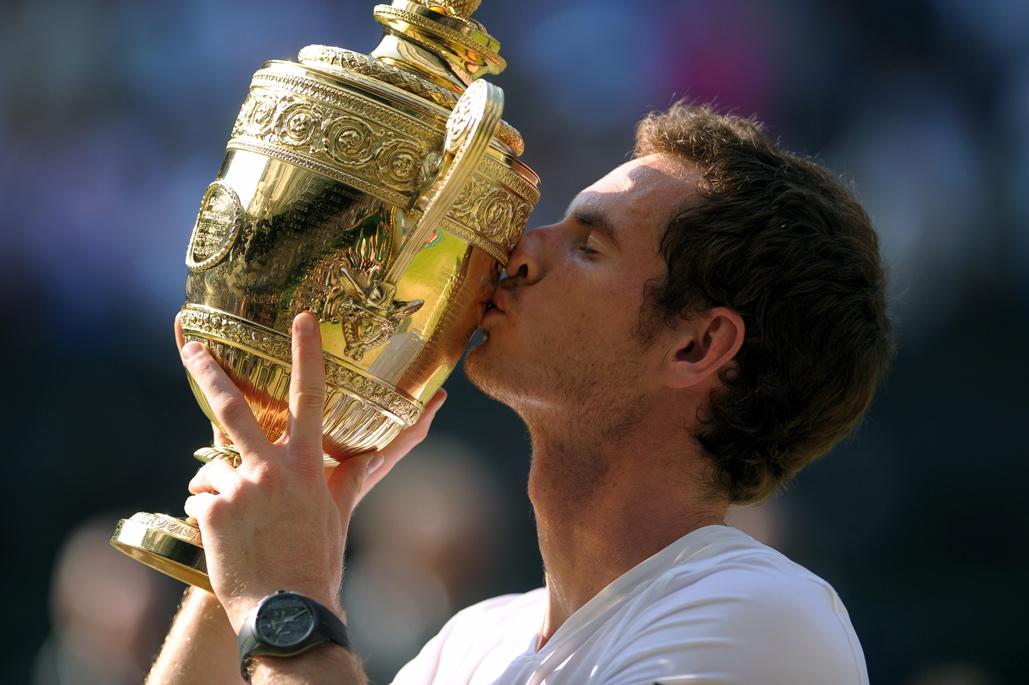
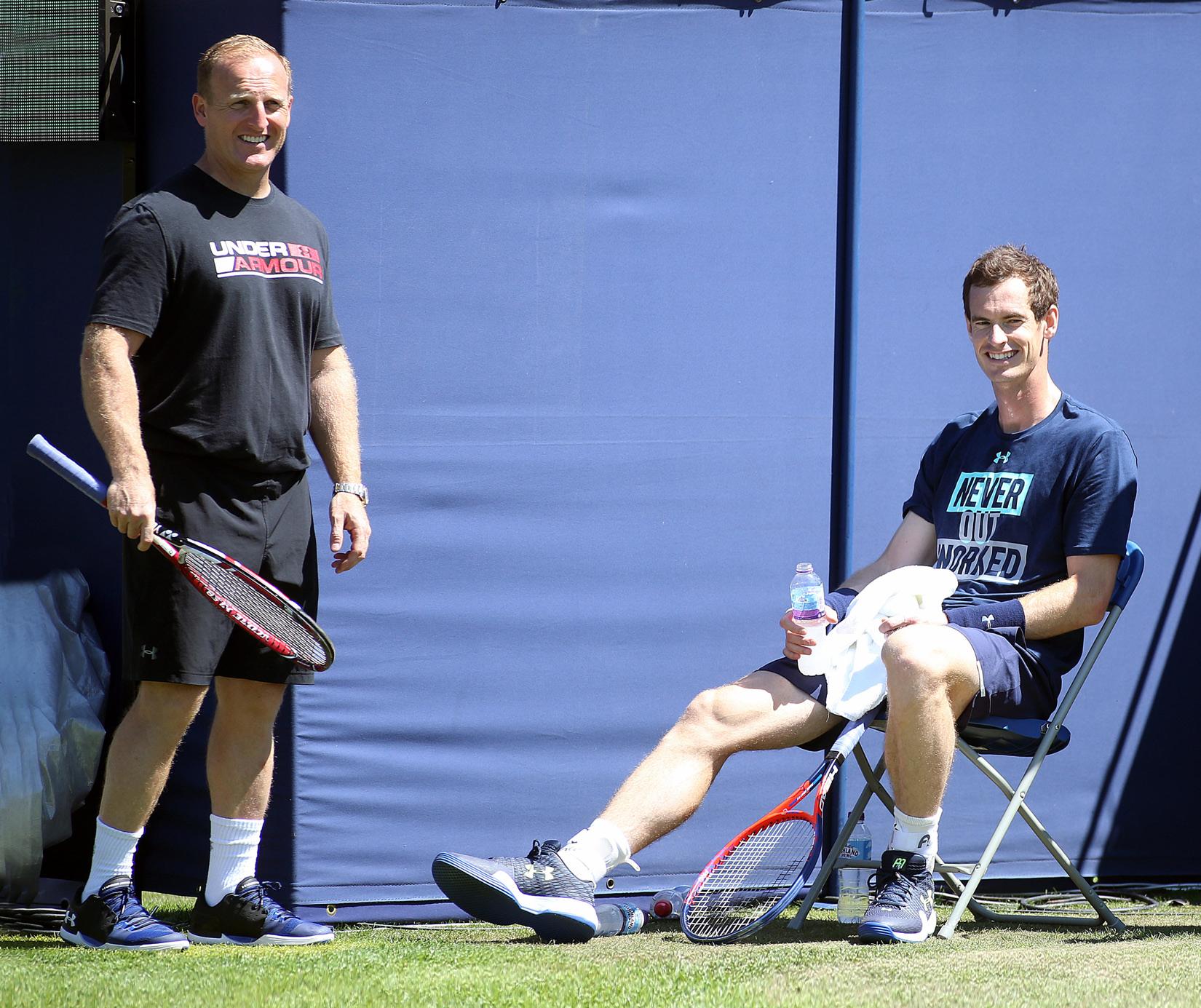
Consistency Is Key
It’s the consistency of work over time, rather than individual pieces of brilliance in one-off sessions that will set you apart. You need to continuously be willing to put in the hard yards.
IT’S A LONG JOURNEY
You have more time than you think. I’m not expecting athletes to reach their physical peak before their early- to mid-20s, but along with that message, it’s the consistency of that work over the years that will have maximum impact.








